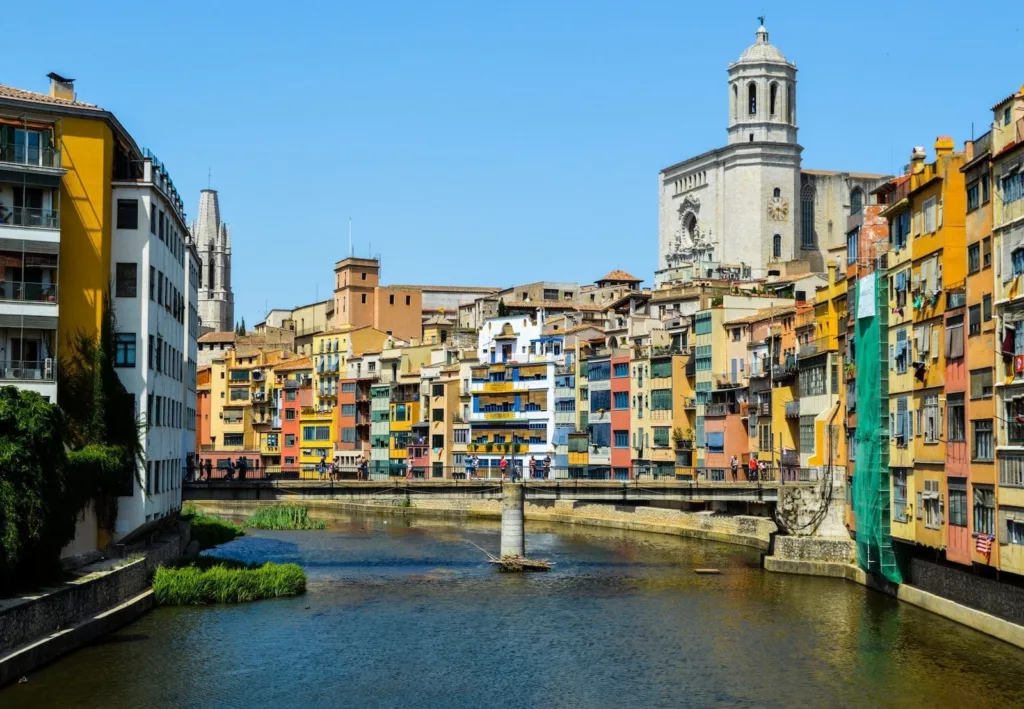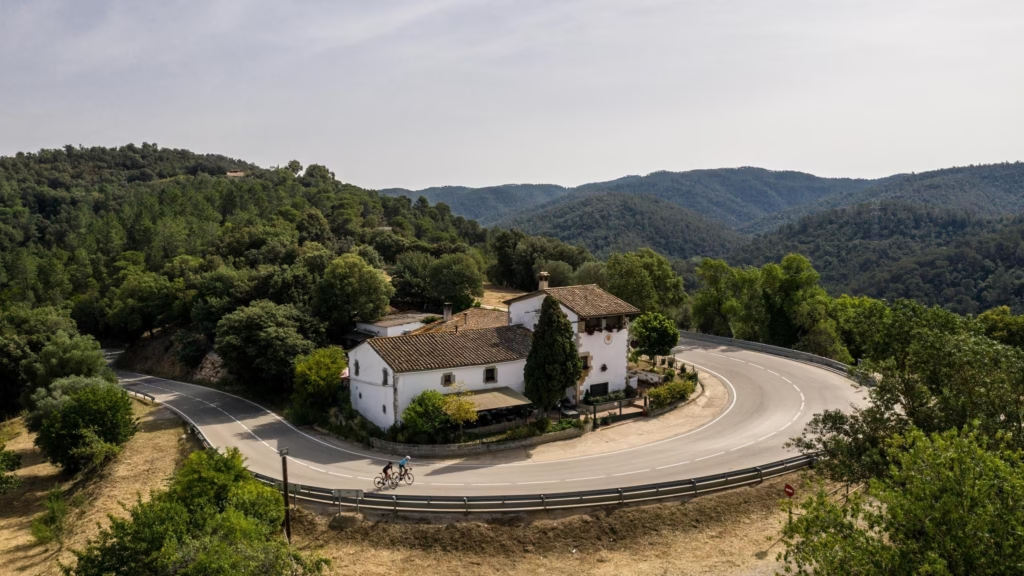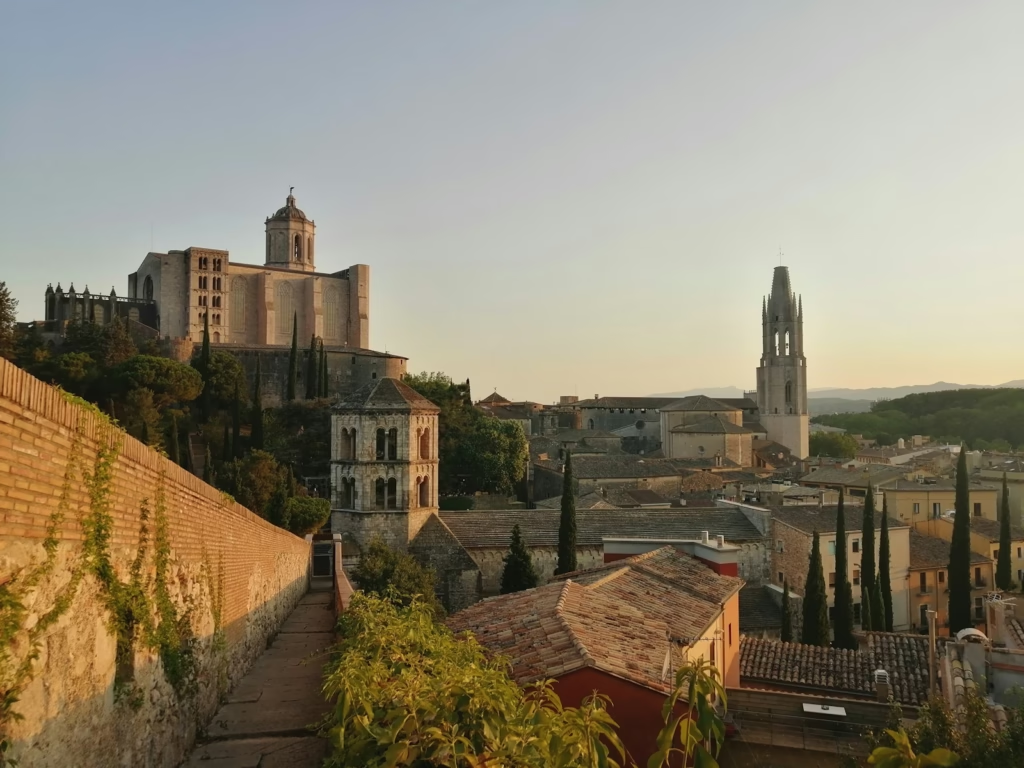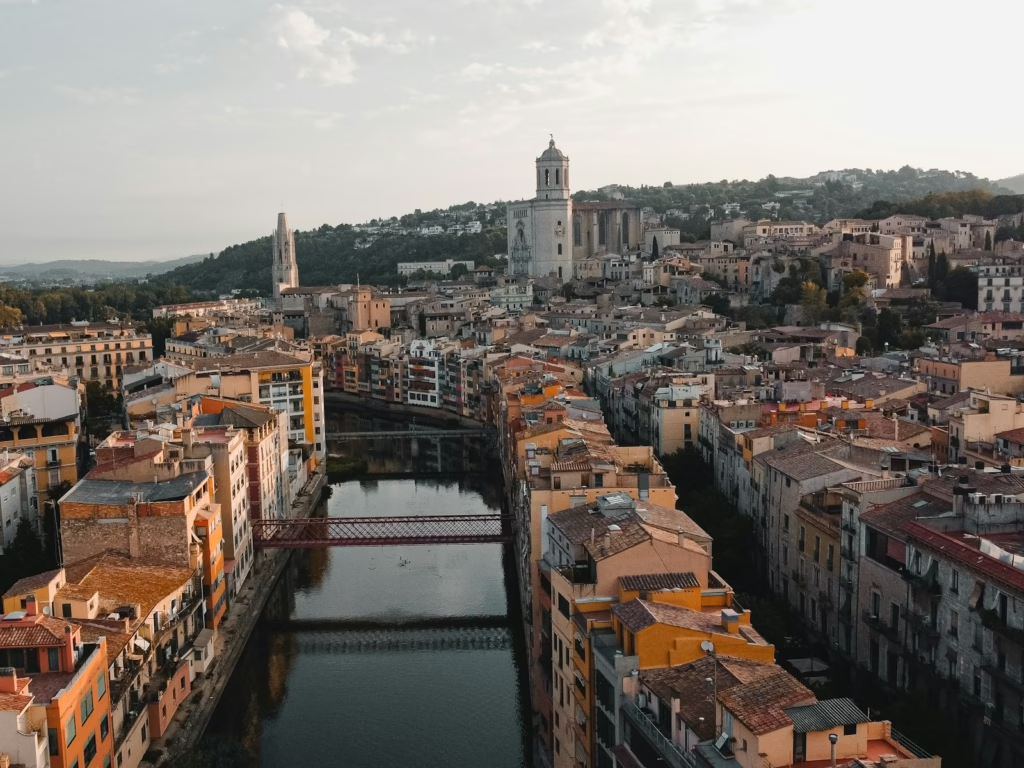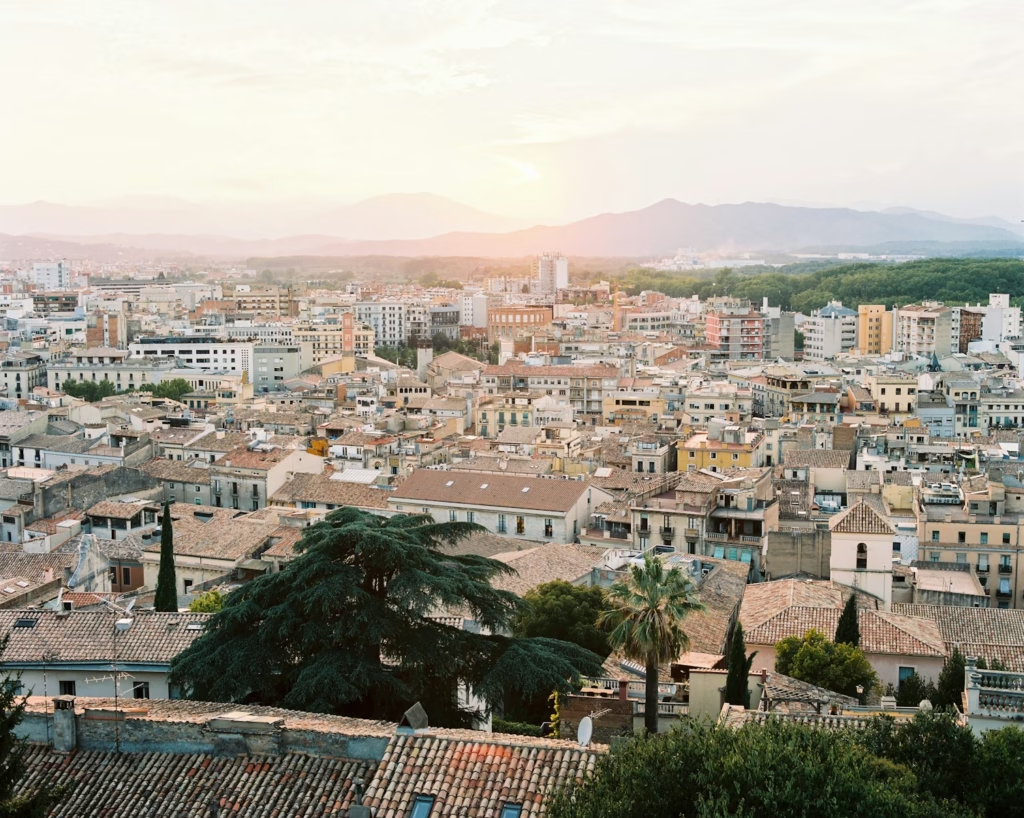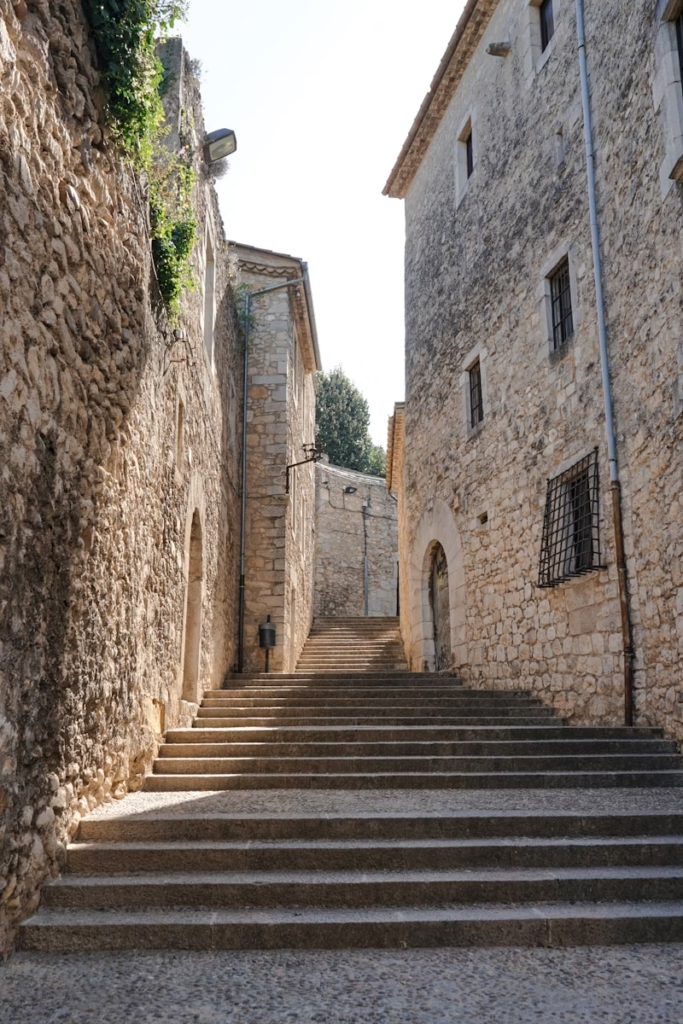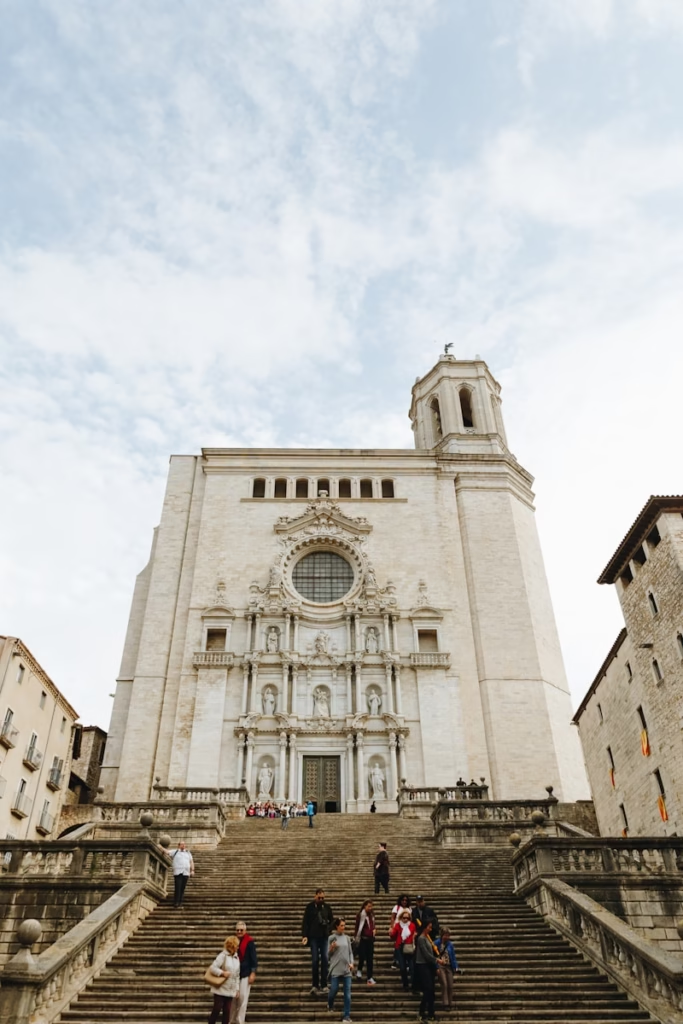The roads in Girona don’t just climb – they reveal. From the first pedal stroke out of the city’s sun-washed walls to the twisting silence of Rocacorba or the chapel views atop Els Àngels, this corner of Catalonia doesn’t feel like somewhere you visit. It feels like somewhere you finally arrive.
It was September, late enough for the heat to ease its grip, early enough to keep the evenings long and light. I’d never been to Girona before, but it had been in my mind for years – that mythical place cyclists whispered about, a playground for the pros, part training ground, part utopia.
And suddenly, I was there.
That first morning, the city still carried the quiet of early hours – cafes hadn’t opened, the old stone streets were still in shade. I was standing beside my bike on a side street just off the Plaça de la Independència, watching the morning haze lift behind the cathedral spires. The air was clean but heavy with the faint smell of coffee beans roasting and dust being swept from shopfronts. I clipped in and pointed towards the hills.
The first climb of the trip was Els Àngels – steady and winding, not brutal, but insistent. The road curled through woodland where the scent of dry pine needles and earth hung in the air like incense. I passed groups of locals riding side by side, chatting in rhythmic Catalan, all of us spinning upwards in that shared early-morning silence. Near the top, the trees began to part, revealing wide views back down the valley towards Girona.
And then – the chapel. Whitewashed and quiet. The summit of Els Àngels isn’t about the gradient, it’s about the shift in stillness. It’s the hush you earn. I unclipped and sat on a low wall, letting the sweat cool on my arms. The wind was soft, the kind that barely lifts your jersey but somehow feels like a reward. I could smell olive trees. I could see swifts cutting lines through the sky.
There were moments, more than once that week, where I thought: I get it now.
Later that day came Rocacorba. I’d heard the warnings – the reputation, the stats, the pain. And yet, it’s deceptive. The lower slopes roll like any country road, a few houses, some quiet corners. Then it changes. The surface gets rougher. The switchbacks tighten. The gradients bite and don’t let go.
It’s hard to romanticise Rocacorba when you’re in it. My legs screamed. Sweat stung my eyes. I was cursing my choice of gearing. But there was a kind of clarity in that discomfort – the only sounds were the breath in my chest, the tick of the chain, the occasional rustle of something in the undergrowth. No cars. No houses. Just road and rock and rhythm.
When I reached the summit – just a rough concrete clearing and some telecommunications gear – I laughed out loud. Not from joy exactly, more from disbelief. I’d wanted to ride Rocacorba for years, and now it was behind me, along with a very real sense of having earned this place.
Back in town that evening, I sat outside a bar in the golden spill of streetlight, sipping a Radler. Girona does thirst-quenching better than most. Light, citrusy, cold – it was exactly what my sun-scorched throat had been craving. A local red wine followed. Then another. Earthy, dry, comforting. I watched a group of off-duty riders – lean, tanned, laughing in three languages. One wore Lotto kit. Another still had tape on his leg from a recent crash. No one cared. Girona doesn’t look twice at a pro.
And that was half the charm – the blur between the everyday and the extraordinary. You ride out of town and share the road with world-class cyclists. You stop for coffee and a Lidl-Trek mechanic is sitting next to you, checking tyre pressures. There’s no ceremony, no ego. Girona is a town where cycling is stitched into the fabric. It just is.
My favourite ride, though, wasn’t the hardest. It was the journey to the sea. We left Girona early, rolling out with the sun behind us, past fields of sunflowers and soft brown hillsides. The roads were quiet – butter-smooth tarmac, a light breeze, the occasional smell of fresh hay and fig trees.
We climbed again – smaller passes, more undulating than punishing. Els Àngels returned briefly, a different face this time, and I felt stronger now. More sure. The land began to open out. We passed through sleepy villages with shuttered cafes and wide empty squares. Dogs dozed under olive trees. Farmers stood by gates, their shirts half-buttoned and brows lined like maps.
And then, L’Escala.
I’d dreamt of this – rolling closer and closer to the salt-tinged promise of the coast. The breeze picked up, tinged now with sea air and something faintly floral. The road dropped into town, past parked scooters and beachgoers in wide hats. I could smell grilled sardines. The ocean was suddenly there – blue, sparkling, endless.
We parked the bikes against a low wall and sat down at a small seaside restaurant with wooden tables and white umbrellas. I had anchovies, thick tomato bread, and a glass of wine that tasted like sunshine and rest. It’s strange how flavours take on more meaning after a ride. Everything was dialled up. The salt, the coolness of the wine glass in my hand, the burn in my legs.
At the next table, a British couple asked where we’d ridden from. When we told them Girona, their eyebrows lifted. “But that’s hours away!” one of them said. I just smiled, thinking about every hill, every stretch of road, every turn we’d taken. They’d driven it. We’d earned it. And now, sitting by the sea, that journey felt perfect.
Later, on the train back – tired, sun-touched, a little wine-heavy – I watched the land we’d covered unfold in reverse. The fields, the curves of the climbs, the silhouettes of hills softened by late afternoon light. I felt both full and emptied out. A kind of quiet peace that only comes from moving through a landscape under your own power.
Girona is everything they say it is. But more than that, it’s personal. You make your own version of it, one climb at a time, one meal, one quiet lookout.
And once you’ve been there, you carry it with you. Every time I clip in now, part of me is back on those roads – chasing sunlight, chasing lunch, chasing the feeling that everything is right where it should be.

